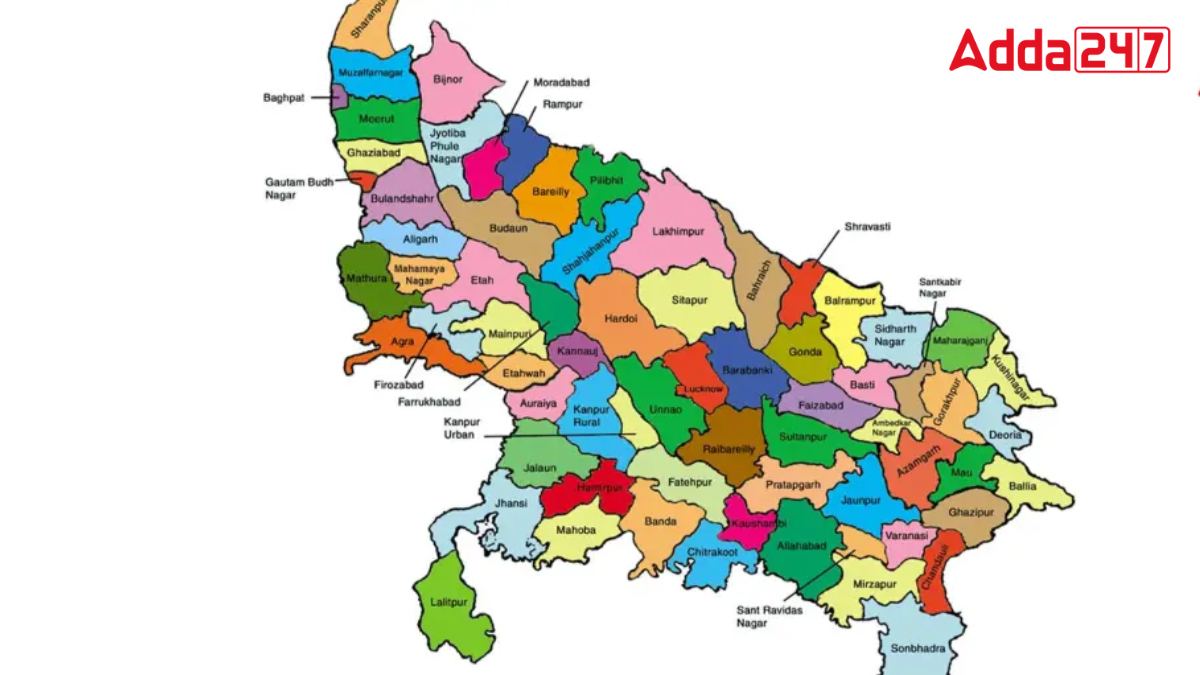Uttar Pradesh is one of the most populated state in India and has 75 districts. Some districts are very large, while others are quite small in area. Small districts may have less land, but they can still be busy, important and full of life. In this article, we will look at the top-10 smallest districts of Uttar Pradesh based on their total land area.
An Overview of Uttar Pradesh
Uttar Pradesh is a large state in northern India. It has over 241 million people, making it the most populated state in India and the world’s most populated region. It shares borders with nine states and Nepal. UP covers about 243,000 square kilometers and has 75 districts. Lucknow is the capital, while Prayagraj is the judicial capital. It plays a major role in India’s population and culture.
Number of Districts in Uttar Pradesh
Uttar Pradesh has a total of 75 districts, which are grouped into 18 administrative divisions. These divisions help in better management and governance of the state, making it easier to run local services.
Top-10 Smallest Districts of Uttar Pradesh
Uttar Pradesh is a large state with 75 districts, but some of them are quite small in size. These districts may have less area, but they are still important for trade, industries and culture. Let’s know about the top-10 smallest districts of Uttar Pradesh in brief.
Hapur, Smallest District of Uttar Pradesh
Hapur is the smallest district in Uttar Pradesh, covering about 660 sq. km. It is known as the Steel City due to its iron and steel industries. Despite its size, it’s an important industrial and trading center.
Ghaziabad
Ghaziabad, spread over around 1,034 sq. km, is a key part of the National Capital Region (NCR). It is well-developed with modern facilities and is known for its industries, real estate and growing population.
Bhadohi
Bhadohi covers about 1,116 sq. km and is world-famous for its carpet industry. Often called the ”Carpet City of India,” it exports handmade carpets globally and plays a vital role in local employment.
Shamli
Shamli, located in western UP, has an area of around 1,167 sq. km. It is a small but developing district, known for sugarcane farming and its emerging industries. It was formed in 2011.
Gautam Buddha Nagar
Home to Noida and Greater Noida, this district spans about 1,269 sq. km. It is UP’s most educated district and a hub for IT companies, universities and modern infrastructure, making it highly urbanized.
Baghpat
Baghpat district has an area of 1,321 sq. km and lies in western Uttar Pradesh. It is mainly known for agriculture, especially sugarcane and wheat. It is close to Delhi and part of the NCR.
Mau
Mau covers about 1,713 sq. km and is situated in eastern UP. It is well-known for its textile and weaving industry, especially cotton and silk. Many people here are skilled in traditional cloth-making.
Hathras
Hathras has an area of 1,752 sq. km and is famous for its asafoetida (hing) processing industry. The district is also known for brassware and its growing market culture in western Uttar Pradesh.
Kaushambi
Kaushambi district spans about 1,837 sq. km and is known for pulse (dal) processing. Located near Prayagraj, it has historical and cultural importance and contributes to UP’s agricultural economy.
Farrukhabad
Farrukhabad, covering 2,279 sq. km, is known for its cloth printing and textile work. The district has a mix of urban and rural culture and plays a strong role in preserving traditional crafts.



 Which Indian City is Known as the Footwe...
Which Indian City is Known as the Footwe...
 Which Desert is known as the Cold Desert...
Which Desert is known as the Cold Desert...
 Top-10 News Media Companies in the World...
Top-10 News Media Companies in the World...







